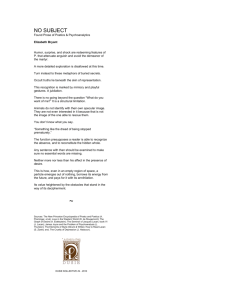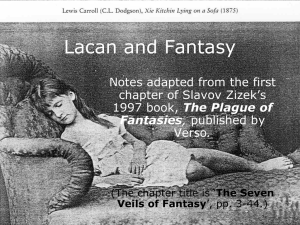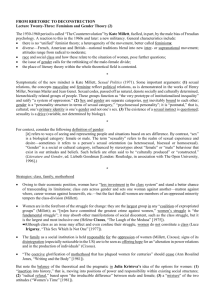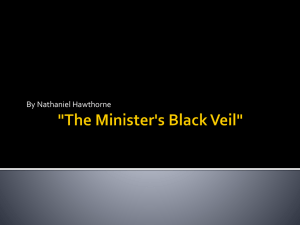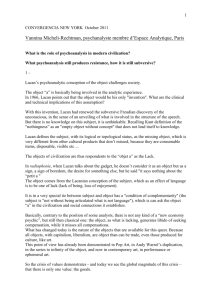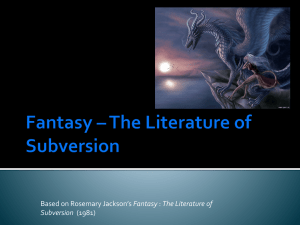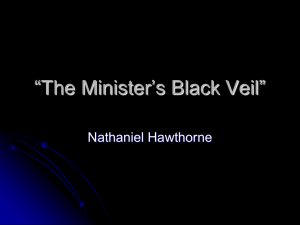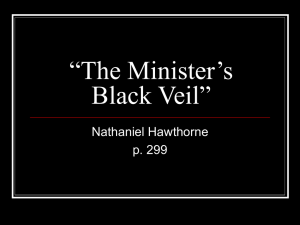PowerPoint
advertisement
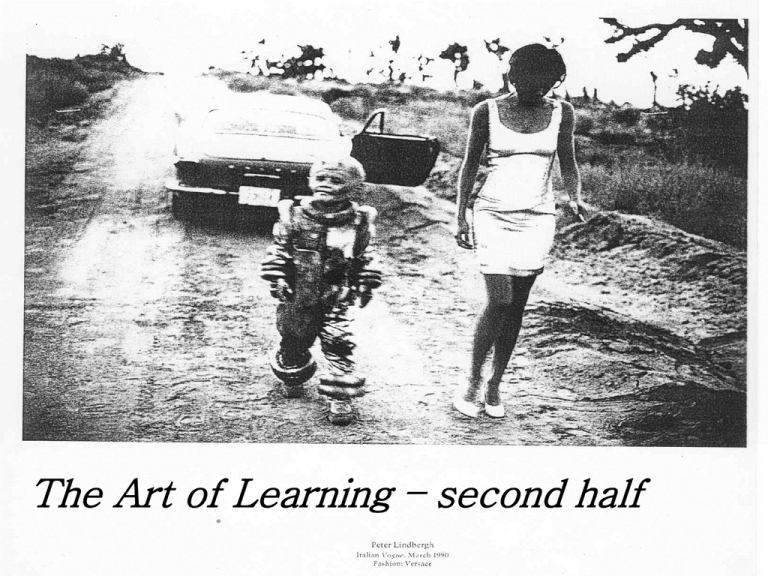
The Art of Learning – second half The first half of the module concentrated on metaphor itself, and your own construction of contemporary metaphors. The additional hand-outs that you were given provide more information about how metaphor might feature directly within schooling, but our concern now is to continue linking figuration with a broad conception of education and its ideologies. Alongside the preparation for the first assignment, I tried to keep alive the idea – developed in the Figurative/Symbolic PowerPoint – that the figures of contemporary life could be likened to ‘symptoms’ of society’s wishes, fantasies, and desires. Freud also adopted this perspective, as is clear from his extended essay, Civilisation and its Discontents; but rather than using Freud as our guide to the figurations of education, we will use Lacan. To recap - the first Lacan PowerPoint introduced these ideas:- Needs became demands within the ‘register’ of language. The child needs water and ends by demanding ‘water’. Ultimately, all demands amount to an endless demand for love – for recognition of the self. Desires, unlike wishes, are ‘barred’ to consciousness. Perhaps a study of figuration is no more than a search for ‘mirrors’ which reflect what we normally cannot see – and it is only through their very artificiality that we can begin to guess at what it is we desire. Desire introduces an absolute condition, and it has as its object ‘nothing’, i.e., a lack. Because of its unconscious nature, desire reveals itself ‘metonymically’, through small details located at the margins of perception. Fantasy ‘realises’ desire, constructing a set of co-ordinates within which the subject may find their location. The second PowerPoint notes on Lacan featured Slavov Zizek’s book, The Plague of Fantasies. The following ideas were introduced:- Zizek’s opening generalisation is that fantasy creates in disguised form what it attempts to conceal. This is a common feature of each of the ‘seven veils’. First Veil – Zizek likens this to Kant’s ‘transcendental schematism’. Fantasy mediates between the symbolic register and the pre-symbolic (the ‘impossible’) real, enabling us to ‘live’ our desire. Second Veil – intersubjectivity. Zizek sums this up as the question – what do others want from me? Over time, Lacan’s authorship emphasised three aspects of this: inter-subjectivity itself, the subject’s entry into the symbolic register, and the agalma – that which gives value to me. Third Veil – narrative’s occlusion of contradiction. Antagonistic aspects of the present are separated by the temporal structure of narrative. This picture avoids that strategy by staging contradiction ‘safely’ – they are only children, after all! Fourth Veil – after the fall. Fantasy re-enacts the installation of the Law, locating the subject within it, rather than leaving it ‘outside’, i.e., not ordered, not able to play a recognised role, and liable to punishment or correction. Fifth Veil – the impossible gaze. Fantasy reconfigures the symbolic register, instantaneously relocating the subject – forming new coordinations with the social fabric. But once ‘narrativised’ a moment of ‘birth’ is generated to account for this change - one the subject ‘sees’. the start of the affair – new forms of significance constructed out of the normal flow of past events. Sixth Veil – the inherent transgression. Here ‘art’ reveals the censorship concealing the fantasmatic underpinnings of the symbolic order. Seventh Veil – the empty gesture. The interaction of the symbolic register and its fantasmatic underpinnings result in the existence of ‘unwritten’ rules which must be obeyed. There is, of course, more to Lacan and fantasy than Zizek’s ‘seven veils’ – his entire book is intended as an introduction to this aspect of lacanian psychoanalysis. However, for our purposes we have more than enough to be getting on with. The next PowerPoint continues with the theme of fantasy offering insight into figuration, but it does so by featuring selected mythological figures that have relevance to the analysis of the ideologies employed within education. D.M.B. 2011.
